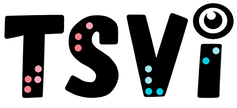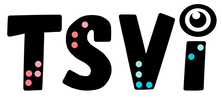- Home
-
Learn
- History of VI >
- Legislation & Laws >
- Vision Professionals >
-
VI Program Resources
>
- Program Printables
- Itinerant Teaching Tips
- Year at a Glance
- VI Program Handbook
- Caseload Analysis
- Organization & Time Management
- Professional Development
- Teacher Standards
- Professional Ethics
- Awards & Recognition
- APH Scholar Program
- Professional Organizations
- Certification Organizations
- Dealing with Challenges
- Professional Publications >
- Relatable Books for All Ages >
- Family Resources >
- Plan
- Basics
-
Teach
- Teaching Strategies >
-
Compensatory Skills Instruction
>
-
Social Skills
>
-
Self Determination
>
- Body Image & Acceptance
- Making Personal Goals
- My Vision Presentation
- My Self-Description
- Create a Personal Data Sheet
- Disclosure Decision
- Disability Statement
- Requesting Help
- Fighting Fears
- My Circle of Support
- Personal Responsibility
- Advocate for Safe Enviroments
- Having Picture Taken
- Coping with Change
- Aging Eyes
- Physical Characteristics
- Political Activism
- Laws Regarding Persons with Disabilities
-
Sensory Efficiency
>
-
Independent Living
>
- Orientation & Mobility Instruction >
- Recreation & Leisure >
-
Career & Vocation
>
-
Grow
- Complete Set Bonus >
-
Recorded Presentations
>
- Webinar: Tips for Being a "Physically Fit" TVI
- Webinar: The Art of Teaching the ECC
- Webinar: Virtual & F2F Strategies
- Webinar: Foundations of Teaching the ECC in the Age of Virtual Instruction
- Webinar: Itinerant Teaching Strategies
- Webinar: Using Themes to Teach the ECC
- Webinar: Conducting a FVLMA
- Webinar: Selecting the Right AT
- Webinar: Developing SMARTER Goals
- Webinar: Determining Service Intensity Using the VISSIT
- Webinar: Activities to Teach the ECC
- Webinar: Accessible Content for BLVI
- Webinar: Accommodations for VI
- Webinar: MIMO Strategies & Activities
- Webinar: SIDPID Strategies & Activities
- Webinar: Standard Course of Study Strategies & Activities
- Webinar: Job Tasks for Job, Career & Life
- Shop
- Jobs
Student ObservationsBy: Carmen Willings
teachingvisuallyimpaired.com As part of the Functional Vision Evaluation (FVE), it is important to observe the student in the classroom and throughout their total school environment. It is also ideal to observe the student at different times of the day and participating in different types of activities. These observations will provide you with insight on how the student uses vision throughout the day or how they use other senses to learn. I typically like to observe the student first as a whole class observation so their behaviors are not affected by my presence. Following the observation, I will meet directly with the student. A time can then be scheduled to complete the functional vision assessment. It is important to observe whether the student has unusual or abnormal visual behaviors and how the student approaches tasks and explores the environment. During the observation, observe any position changes, such as head tilt, or other body movements which may suggest limited visual motor skills or eccentric viewing. Note how the student interacts with toys, the preferred viewing distance and how the student uses central vision. Note any learning forward, squinting, precise reaching, over-reaching or under-reaching for objects. Observe the student during routines such as meal time, on the playground, and during different classes. Observe the student's visual abilities during routines such as playing with toys, reading, attending to classroom instruction, eating lunch, watching class pets or interacting with peers and teachers.
1. Use of Glasses and Other DevicesIf the student has glasses, it is very important to know why they are prescribed. Glasses usually help a refractive error, but they may also be prescribed with a prism for a muscle imbalance. If the glasses were prescribed for seeing things at near only, they may make the students distance vision worse. If the glasses were prescribed for distance only, the student will probably not need them for near viewing. Observe if the student tolerates prescribed glasses, or if they are worn correctly. Observe if the glasses appear to be the right size for the student's face and if the ear pieces fit comfortably over the ears. Note if they are clean and scratch-free. Also note if the student uses any low vision devices and specify what devices and their type and power.
2. Verify Accuracy of Observations with Therapists and TeachersDiscussions/observations with therapists and classroom teachers in order to try to develop a better understanding of the student. An itinerant teacher will not have the same rapport with the student as they do not spend as much time with them. For that reason, it is helpful to talk with therapists and classroom teachers who do have this rapport about how they feel the student is doing, if they are addressing the goals and how the student is functioning. The TVI may ask to observe the teacher working with the student to observe how the student is functioning within the normal routine and with familiar adults.
3. Social InteractionsDoes the student recognize favorite classmates and teachers? Does the child recognize their parent or other familiar adults, peers, or siblings? Does the student respond to facial expressions? Does the student make eye contact during verbal exchanges? If the student is able to do these, at what distance?
4. Movement Through EnvironmentObserve the student as they move throughout their classroom and school environment. Note if the student avoids collisions with furniture (stationary object) and other landmarks and classmates and low lying objects. Also note if the student is able to avoid moving objects and people before physical contact is made. Does the student move quickly and easily to common areas.
5. Behavioral AbnormalitiesNote any behavioral abnormalities including: lack of or reduced eye contact; poor visual/motor coordination (hand-eye coordination); covering or closing one eye for near tasks; tilting head to one side for near tasks; thrusting head forward to see distant objects; trying to “brush away” a blur; rubbing eyes often or blinking often while reading or looking at books; frowning or squinting when looking at or trying to see near or distant objects; stumbling often over objects, bumps into things, is awkward; difficulty with steps, curbs or surface changes; holding book, toy, or picture too close or too far away to examine; avoiding near tasks; losing interest quickly or becomes irritable with close work; difficulty concentrating or paying attention; requiring a lot of time to complete work; slow adjustment to lighting changes; and touches things to help recognize them.
6. Perception of StimuliFor students that have minimal response to visual stimuli, it is important to indicate what level of remaining visual abilities are present.
7. External Ocular StatusAppearance of the eyes can possibly indicate the presence of a visual impairment and quality of functional vision. External structures such as the globe, eyelids, pupils, iris, and cornea should be observed for symmetry, size, and shape. Observation of nystagmus, the pupils response to light, and blink reflex should also be noted. It should also be noted if the student's eyes appear healthy including if they are matted, have styes, ptosis (drooping or falling of the eyelid) or wear a prosthetic eye.
8. Alignment and Ocular MotilityObserve the light reflection on the eye for signs of misalignment. Proper alignment is necessary for the eye to work as a team. It is important to reading, driving, eye-hand coordination, safety and sports. Also take note of eccentric viewing (turning the head or eyes in order to view materials presented), and eye preference. Note if the student holds objects up to one eye consistently, or does the student's head position indicate a preferred eye. Indicate which eye in the report. Also note the student's muscle balance. Also observe how the student reacts to light (artificial light sources, sunlight, and night vision). One quick way of determining eye preference is to ask a student to look through a cardboard tube or monocular; the eye to which the student brings the device is usually the preferred eye.
|
History of Visual Impairments
Professional Practice
Vision Professionals
Professionalism
Teacher Resources
Professional Publications
VI Book Resources
Family Resources
VI Referrals
Medical vision exams
visual diagnosis
fvlma
|
|
Teaching Students with Visual Impairments LLC
All Rights Reserved |
- Home
-
Learn
- History of VI >
- Legislation & Laws >
- Vision Professionals >
-
VI Program Resources
>
- Program Printables
- Itinerant Teaching Tips
- Year at a Glance
- VI Program Handbook
- Caseload Analysis
- Organization & Time Management
- Professional Development
- Teacher Standards
- Professional Ethics
- Awards & Recognition
- APH Scholar Program
- Professional Organizations
- Certification Organizations
- Dealing with Challenges
- Professional Publications >
- Relatable Books for All Ages >
- Family Resources >
- Plan
- Basics
-
Teach
- Teaching Strategies >
-
Compensatory Skills Instruction
>
-
Social Skills
>
-
Self Determination
>
- Body Image & Acceptance
- Making Personal Goals
- My Vision Presentation
- My Self-Description
- Create a Personal Data Sheet
- Disclosure Decision
- Disability Statement
- Requesting Help
- Fighting Fears
- My Circle of Support
- Personal Responsibility
- Advocate for Safe Enviroments
- Having Picture Taken
- Coping with Change
- Aging Eyes
- Physical Characteristics
- Political Activism
- Laws Regarding Persons with Disabilities
-
Sensory Efficiency
>
-
Independent Living
>
- Orientation & Mobility Instruction >
- Recreation & Leisure >
-
Career & Vocation
>
-
Grow
- Complete Set Bonus >
-
Recorded Presentations
>
- Webinar: Tips for Being a "Physically Fit" TVI
- Webinar: The Art of Teaching the ECC
- Webinar: Virtual & F2F Strategies
- Webinar: Foundations of Teaching the ECC in the Age of Virtual Instruction
- Webinar: Itinerant Teaching Strategies
- Webinar: Using Themes to Teach the ECC
- Webinar: Conducting a FVLMA
- Webinar: Selecting the Right AT
- Webinar: Developing SMARTER Goals
- Webinar: Determining Service Intensity Using the VISSIT
- Webinar: Activities to Teach the ECC
- Webinar: Accessible Content for BLVI
- Webinar: Accommodations for VI
- Webinar: MIMO Strategies & Activities
- Webinar: SIDPID Strategies & Activities
- Webinar: Standard Course of Study Strategies & Activities
- Webinar: Job Tasks for Job, Career & Life
- Shop
- Jobs

